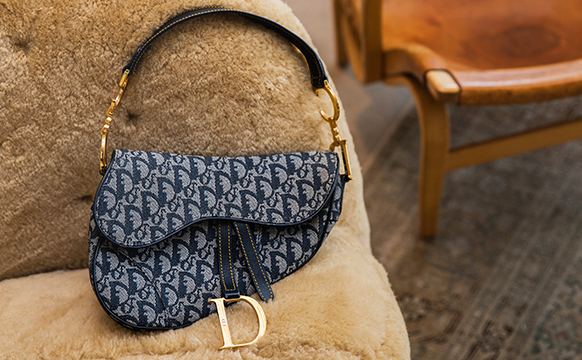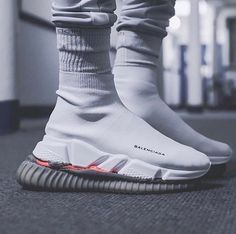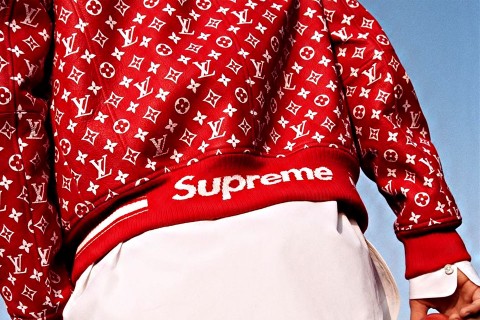LOGOPHILIA

Ruhi Pudipeddi
28 October 2019
Addressing the diluted luxuries in consumerism, the dwindling of artistry, and the materialism of premium goods.
Run your hands over a vintage high-fashion branded handbag and you can see that the fabric, structure, and hardware, if preserved correctly and cared for, are durable and crafted for longevity. That is one contribution to the item's value and is likely echoed in its price. Perhaps the bag has a distinct silhouette or printed pattern, something signature and unusual. Consider the Dior saddle, with its asymmetrical teardrop shape, or the plush diamond-shaped quilting we associate viscerally with Chanel. A certain individualistic style can be recalled from pretty much any major designer. These factors gave luxury brands a glittering reputation of high-quality craftsmanship, rarity, and distinct artistry.
The 2010s, however, are the age of -- to put it bluntly -- “elite mediocrity.” Plastic Versace slides line swimming pools where influencers suntan under Balenciaga baseball caps and Louis Vuitton monogrammed towels. A dystopia in which luxury brands have accrued so much alleged value that even the most mundane, commonplace items are regarded as status symbols. But are they even indicative of the same affinity toward craftsmanship that they once embodied? Let's examine these brands' consumers of the previous century as compared to those who shop them now. The wealthy customer of the 20th century was greeted with leather hand-cobbled shoes and woven tweed jackets. Today, these are swapped out for mesh sneakers and cotton hoodies. Perhaps the tastes of wealthy customers have changed, but an equally interesting possibility is that the relationship between fashion and status is dwindling. 21st-century upper class consumers are increasingly indifferent toward brand flamboyance as they merge stylistically with the middle class — for whom focus is drawn away from meticulous craftwork and more toward the company of production. Logophilia, as I will refer to it, is about this infatuation with branding as a performative fashion.
Run your hands over a vintage high-fashion branded handbag and you can see that the fabric, structure, and hardware, if preserved correctly and cared for, are durable and crafted for longevity. That is one contribution to the item's value and is likely echoed in its price. Perhaps the bag has a distinct silhouette or printed pattern, something signature and unusual. Consider the Dior saddle, with its asymmetrical teardrop shape, or the plush diamond-shaped quilting we associate viscerally with Chanel. A certain individualistic style can be recalled from pretty much any major designer. These factors gave luxury brands a glittering reputation of high-quality craftsmanship, rarity, and distinct artistry.
The 2010s, however, are the age of -- to put it bluntly -- “elite mediocrity.” Plastic Versace slides line swimming pools where influencers suntan under Balenciaga baseball caps and Louis Vuitton monogrammed towels. A dystopia in which luxury brands have accrued so much alleged value that even the most mundane, commonplace items are regarded as status symbols. But are they even indicative of the same affinity toward craftsmanship that they once embodied? Let's examine these brands' consumers of the previous century as compared to those who shop them now. The wealthy customer of the 20th century was greeted with leather hand-cobbled shoes and woven tweed jackets. Today, these are swapped out for mesh sneakers and cotton hoodies. Perhaps the tastes of wealthy customers have changed, but an equally interesting possibility is that the relationship between fashion and status is dwindling. 21st-century upper class consumers are increasingly indifferent toward brand flamboyance as they merge stylistically with the middle class — for whom focus is drawn away from meticulous craftwork and more toward the company of production. Logophilia, as I will refer to it, is about this infatuation with branding as a performative fashion.

Of course, the rise of hypebeast fashion is also closely intertwined with the allure of more flamboyantly brand-associated items. Hypebeast fashion embodies anything and everything branded, and is particularly subject to short-lived, in-the-moment trends. Thanks to labels like Yeezy and Off-White, we see that the influences of logo-inundated pieces make their way into luxury items — consider crossovers like Louis Vuitton x Supreme, Fendi x Fila.
The irony of logophilia is made even more apparent in knockoff culture. Premium streetwear brand Supreme, for example, always stocks their immediately recognizable "box-logo" items, although their stylistic focus manifests itself in diverse pieces that are usually extremely limited in quantity and availability. What does this imply about the customer that just wants to own a classic black t-shirt with "Supreme" plastered across the front? Is this personal expression or straight-up materialism? It's pretty simple to recreate a screen-print logo such as Supreme's box logo, which accounts for the globally spread market of luxury fakes, and there are even more implications associated with consumers of these items. Ultimately, it can be said that the price paid for these items is not in the spirit of owning a craft premium, but rather in the idea of fitting within a certain class of people. The rarity of owning a limited-edition luxury item was once part of its value, but in an era of mass production of certain items and an entire replica industry, this aspect is significantly diluted.

It would be remiss not to discuss how logophilia manifests itself in a global context. Chinese consumers now account for one-third of the world’s total luxury spending, proving an unmatched appetite for these goods as their luxury spending percentage also rose the most in the past year. Following the same patterns in luxury consumption, Chinese consumers are set to account for 40% of all luxury spending by 2025, delivering 65% of global growth in the luxury market. As the great majority of fashion-industry profits in China are secured by merely 20% of the companies, it’s clear that top brands monopolize the market. Further market analysis suggests it’s mostly young adults who are contributing to this growth -- not in the least surprising considering the exact same demographic is heavily involved in social media and the influence that comes with. Young consumers find a form of social capital in the ownership of designer items, as if the association lends them toward a distinct, exclusive community, bolstered by the demands of a fast-paced digital world. In China specifically, it’s the “single child generation” that drives luxury appetite, which the 2019 McKinsey China Luxury Report suggests results from a combination of financial familial support and the novelty of making their first designer purchases. 9 out of 10 consumers who are part of the youngest Chinese generation began engaging with luxury only within the last three years. The implication: European brands developed their legacies over a few centuries and thus across a few generations of consumers, but Chinese consumers are younger and newer, and their tastes are very much shaped by what’s happening right now.
All of this said, we can still thank luxury brands for aspects of design that aren't so brand-focused, like certain types of motifs and styles that propagate down from high fashion houses. The premium associated with expensive brands is diluted by consumerism and the allure of wearable conformity, which colors our view of otherwise very ordinary objects. However, we can remind ourselves of the artistry behind these brands in making conscious consumer choices — logos aside.

